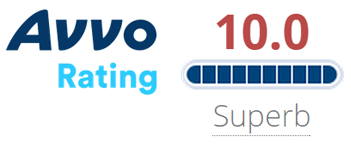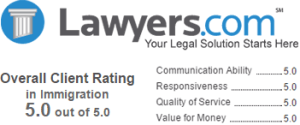Shusterman’s Immigration Update January 2018
Volume Twenty Three, Number One
SHUSTERMAN’S  IMMIGRATION UPDATE is the Web’s most popular e-mail newsletter regarding US immigration laws and procedures with over 60,000 subscribers located in more than 150 countries. It is written by a former INS Trial Attorney (1976-82) with over 40 years of experience practicing immigration law.
IMMIGRATION UPDATE is the Web’s most popular e-mail newsletter regarding US immigration laws and procedures with over 60,000 subscribers located in more than 150 countries. It is written by a former INS Trial Attorney (1976-82) with over 40 years of experience practicing immigration law.
Published by the Law Offices of Carl Shusterman, 600 Wilshire Blvd, Suite 1550, Los Angeles, California, 90017. Phone: (213) 623-4592 x0.
This is the beginning of the 23rd year of Shusterman’s Immigration Update. We published the first issue in June 1996.
Want to keep up to date with the latest changes in immigration laws, procedures, processing times and forms? Subscribe now to our Immigration Newsletter, join the conversation on our Facebook Page, follow our Blog Posts and subscribe to our “How-To” Immigration Videos.
Client Reviews

If You Want the Best Result Possible
“Mr. Shusterman and his law firm have represented both me personally and the nonprofit organization that I am associated with. The cases have ranged from the simple to the complex and contentious. Each case has been successfully completed. It is very simple – if you want the best result possible, then select the Law Offices of Carl Shusterman.”
- Richard B. Knapp, Chicago, Illinois
Read More Reviews
Zoom Consultations Available!
Shusterman’s Immigration Update January 2018
TABLE OF CONTENTS
1. Immigration to the USA: A Positive or a Negative?
2. State Department Visa Bulletin for December 2017 & Predictions for FY2018
3. Immigration Government Processing Times
4. DHS is on the Road to Phasing Out H-4 EADs
5. Success Story: Overcoming a Prior Deportation Order
6. Immigration Trivia Quiz: University Founders
7. Ask Mr. Shusterman: 4 Tips for Finding the Best Immigration Lawyer
8. Shusterman’s Upcoming Immigration Seminars
9. Jobs & Green Cards for RNs & MedTechs: Free Legal Help!
10. No Winner for our December 2017 Immigration Trivia Quiz
NEWS FLASHES
- BALCA Overturns Denial Where Applicants Were Rejected Without Interview – Where two US applicants were rejected without being interviewed, BALCA found that, based on the resume review, the employer could determine that there was no reasonable possibility that the applicants were qualified for the position offered. (Matter of Marlabs, Inc., 11/9/17)
- DHS OIG Reveals Concerns Over Treatment and Care of ICE Detainees – On December 14, the DHS Office of Inspector General published a report about issues with treatment and care of the ICE detainees after recently inspecting five ICE detention centers. In addition, detainees reported intimidation and fear of retaliation from the staff, causing a lack of complaints being reported.
- EOIR Publishes Memo with Guidelines for Cases Involving Juveniles and Unaccompanied Children – On December 20, the EOIR issued a memorandum with guidelines on making judgements in any case involving unmarried minors, including respondents and third-party witnesses. In addition, the EOIR issued a memorandum on making judgements for cancellation of removal or suspension of deportation applications subject to annual caps on or after January 4, 2018.
- H-2B Reaches Cap for First Half of Fiscal Year – On December 21, USCIS announced the H-2B cap has been reached for the first half of the FY2018. In addition, H-2B petitions exempted from Congress-mandated cap and cap-subject petitions will continue to be accepted for the second half of the FY2018.
- USCIS Announces Re-Registration Period for Hondurans with TPS – On December 15, USCIS announced Honduran TPS holders could maintain their status through July 5. The re-registration period spans from December 15, 2017 to February 18, 2018. Applicants must complete Form I-821, and can request an EAD by filing Form I-765.
- USCIS Announces Re-Registration Period for Nicaraguans with TPS – On November 15, USCIS announced DACA renewal requests previously denied due to being received past the deadline will be accepted if resubmitted with proof of USPS service error.
- USCIS Provides a Policy Memo on Updated Agency Interpretation of Cuban Citizenship Law – On November 21, USCIS issued a policy memorandum which states that: “… an individual’s Cuban consular certificate documenting birth to at least one Cuban parent cannot serve as evidence of the individual’s Cuban citizenship for purposes of the CAA because the consular certificate is issued before it is formally registered in Cuba by the Cuban Ministry of Justice. This remains true even if the consular certificate states that the individual to whom the certificate was issued is a Cuban citizen.”
- Wages and High-Skilled Immigration: How the Government Calculates Prevailing Wages and Why It Matters – On December 14, the American Immigration Council issued a report which describes how the Department of Labor (DOL) makes prevailing wage determinations.
1. Immigration to the USA: A Positive or a Negative?
Last week, the New York Times reported that President Trump had made the following comments about immigrants from certain countries: They “all have AIDS” and they should “go back to their huts”. The President denies using these words, but there is no doubt that during his campaign, he derided certain immigrants as “criminals” and “rapists”.
In 2014, Trump tweeted “Our government now imports illegal immigrants and deadly diseases. Our leaders are inept.”
As a former INS Trial Attorney (1976-82) who has practiced immigration law for more than 40 years, I see immigration quite differently. Let me provide a few examples:
The 3 main countries that Asian immigrants come from are the Philippines, China and India.
Over the years, we have helped our healthcare clients by immigrating over 10,000 registered nurses to the US, 90% of whom were born in the Philippines. Our country has never been able to educate enough nurses to care for our citizens. Most of the nurses educated in the US have 2-year degrees while Filipino nurses all have 4-year degrees. In my experience, Filipina nurses (and caregivers) are not only highly competent, but extremely caring people.
Also, thousands of Filipino teachers work in inner city schools all across the US where city school districts can not get American-born teachers to work.
We represent Chinese clients, not only EB-5 investors who have created thousands of jobs for American workers, but also cancer researchers who have helped to make significant advances in treating often fatal diseases. The first HIV treatment in the US was created by a Chinese immigrant.
Indian immigrants account for the majority of professionals with H-1B visas. Many work as computer programmers and others are employed as physicians in medically-underserved areas of the US. Yet, despite their enormous contributions to the technology and healthcare sectors of our economy, they are forced to wait many years, often over a decade to qualify for green cards. This is because of outdated per country quotas which could easily be eliminated by Congress and our President.
We are truly blessed that such persons come to the US to be educated and make enormous contributions to our country.
Without immigrants, we wouldn’t have Apple, Google, Yahoo, Intel, Amgen and many of the greatest and most productive companies in the world.
And as the son of an immigrant from Syria would state at the annual Apple Conference: “And one more thing…”
My opinion of immigrants is not only shaped by the wonderful clients who we have helped over the years, but by our attorneys, paralegals and support staff. It has been my privilege to work with these people for years, even decades.
Our attorneys are mostly immigrants or children of immigrants. One is a Chinese immigrant born in the Philippines. Another came to the US as a refugee from Bosnia. A third is the daughter of an El Salvadorian. Yet none of them were hired based on their ethnicity, but because they are highly-competent attorneys.
The same goes true for our paralegals: One was born in China, another in the Philippines. Two came to the US as refugees from El Salvador.
All three people in our Accounting Department are either immigrants or descended from immigrants from the Philippines.
My personal assistants are mostly Hispanic. They are all recent university graduates, and over the past decade, most of them have gone on to become attorneys or to get MBA degrees.
It is a time-tested strategy to get more votes by demonizing the “other”. Someone did this in Germany in the 1930s.
However, based on my experience, I regard immigration as the sincerest form of flattery to the USA, and the reason why our Nation of Immigrants is the world’s leading economy.
2. State Department’s Visa Bulletin for January 2018 Predictions for FY2018
EMPLOYMENT CATEGORIES
In the January 2018 Visa Bulletin, the worldwide EB categories all remain current.
China EB-2 and EB-3 for professionals each move ahead by 5 weeks. China EB-5 inches forward by 1 week.
India EB-2 advances 3 weeks while India EB-3 moves ahead by 2 weeks.
Philippines EB-3 fails to advance.
Below are the State Department’s Charlie Oppenheim’s most recent predictions for the movement of employment-based priority dates for the rest of the fiscal year:
EB-1 China and EB-1 India. These categories will remain current for the coming months, but the imposition of a final action date in the summer remains possible.
EB-2 Worldwide. The final action dates for this category will remain current for the foreseeable future. Charlie notes a decrease in EB-2 Worldwide demand, which could be exacerbated by the transition of employment-based I-485 processing to the local USCIS field offices.
EB-2 China and EB-3 China. In January, EB-2 China and EB-3 China advance by more than one month to August 8, 2013, and April 15, 2014, respectively.
EB-2 India. Consistent with Charlie’s predictions, in January, EB-2 India will again advance by less than one month from November 1, 2008, to November 22, 2008. It is not likely that the final action date for this category will move into 2009 before summer.
EB-3 India. The final action date for EB-3 India will advance two weeks from October 15, 2006, to November 1, 2006, in January. As we move into the second quarter of Fiscal Year (FY) 2018, demand in this category is levelling out following heavy visa number usage in October. This allows for modest forward advancement which Charlie hopes will continue at the pace of up to a few weeks each month.
EB-3 Philippines. In January, EB-3 Philippines advances one month to February 15, 2016. The final action date in this category held last month due to a surge in demand, which has since disappeared, allowing for this forward movement. Additional forward movement is possible, but Charlie does not want to advance the category too fast in case the decline in demand is only temporary.
The following chart tells the story of the EB numbers in detail for December 2017:
A. APPLICATION FINAL ACTION DATES FOR EMPLOYMENT-BASED PREFERENCE CASES
| World | China | El Salvador, Guatemala, Honduras | India | Mexico | Philippines | |
|---|---|---|---|---|---|---|
| 1st | Current | Current | Current | Current | Current | Current |
| 2nd | Current | 8-8-13 | Current | 11-22-08 | Current | Current |
| 3rd | Current | 4-15-14 | Current | 11-01-06 | Current | 2-15-16 |
| Unskilled | Current | 12-22-06 | Current | 11-01-06 | Current | 2-15-16 |
| 4th | Current | Current | 12-01-15 | Current | 6-01-16 | Current |
| 5th | Current | 7-22-14 | Current | Current | Current | Current |
B. DATES FOR FILING OF EMPLOYMENT-BASED VISA APPLICATIONS– These dates indicate when immigrant applicants can send adjustment of status applications without having to wait for their priority dates to become current.
| World | China | El Salvador, Guatemala, Honduras | India | Mexico | Philippines | |
|---|---|---|---|---|---|---|
| 1st | Current | Current | Current | Current | Current | Current |
| 2nd | Current | 11-15-13 | Current | 2-08-09 | Current | Current |
| 3rd | Current | 9-01-15 | Current | 1-01-08 | Current | 8-01-16 |
| Unskilled | Current | 6-01-08 | Current | 1-01-08 | Current | 8-01-16 |
| 4th | Current | Current | 4-15-16 | Current | Current | Current |
| 5th | Current | 10-01-14 | Current | Current | Current | Current |
Below are the State Department’s Charlie Oppenheim’s most recent predictions for the movement of family-based priority dates for the rest of the fiscal year:
The recent retrogressions in FB-1 Philippines and FB-2B Philippines may continue to hold for a while. FB-1 Philippines has already used more than forty percent of its annual numbers, whereas it normally uses fifty-four percent of its visa numbers by March. This means that FB-1 Philippines only has approximately eleven percent of its numbers to use between January and March.
FB-4 India is advancing, and the FB-2A category for all countries is also moving faster than expected.
FAMILY-BASED CATEGORIES
Each of the worldwide family preference categories move forward in January between 4 and 6 weeks.
The family-based categories in the visa bulletin are as follows:

F-1 Unmarried Adult Sons & Daughters of US Citizens
F-2A Spouses & Children of LPRs
F-2B Unmarried Adult Sons & Daughters of LPRs
F-3 Married Sons & Daughters of US citizens
F-4 Brothers & Sisters of US Citizens
An applicant’s priority date is the day that the government received the I-130 Petition. For more on family-based visas and how you can shorten your application time, see Attorney Shusterman’s video near the top of this page.
VISA BULLETIN – FAMILY
All of the worldwide family-based categories advance in January between 1 and 6 weeks.
The Mexican family-based categories move forward by 3 to 6 weeks.
Two of the family-based categories for the Philippines remain frozen in January while the other 3 categories advance between 1 and 5 weeks.
The following charts tell the story in detail:
A. APPLICATION FINAL ACTION DATES FOR FAMILY-SPONSORED PREFERENCE CASES–
| World | China | India | Mexico | Philippines | |
|---|---|---|---|---|---|
| 1st | 3-15-11 | 3-15-11 | 3-15-11 | 5-01-96 | 1-01-05 |
| 2A | 2-01-16 | 2-01-16 | 2-01-16 | 1-01-16 | 2-01-16 |
| 2B | 12-01-10 | 12-01-10 | 12-01-10 | 8-15-96 | 7-01-06 |
| 3rd | 10-08-05 | 10-08-05 | 10-08-05 | 6-15-95 | 3-15-95 |
| 4th | 6-22-04 | 6-22-04 | 12-15-03 | 11-01-97 | 9-01-94 |
B. DATES FOR FILING FAMILY-SPONSORED VISA APPLICATIONS– These dates indicate when immigrant applicants can send adjustment of status applications without having to wait for their priority dates to become current.
| World | China | India | Mexico | Philippines | |
|---|---|---|---|---|---|
| 1st | 1-01-12 | 1-01-12 | 1-01-12 | 11-01-96 | 10-01-07 |
| 2A | 11-01-16 | 11-01-16 | 11-01-16 | 11-01-16 | 11-01-16 |
| 2B | 9-01-11 | 9-01-11 | 9-01-11 | 1-01-97 | 9-01-07 |
| 3rd | 12-01-05 | 12-01-05 | 12-01-05 | 10-01-95 | 6-15-95 |
| 4th | 11-15-04 | 11-15-04 | 6-22-04 | 2-08-98 | 3-01-95 |
3. Immigration Government Processing Times
 We link to the most recent immigration waiting times for each of the four USCIS Service Centers, the National Benefits Center and the Administrative Appeals Office. We also link to the processing times of all of the 83 USCIS District Offices and Sub-offices. We link to the Labor Department’s page entitled “Processing dates for labor certification applications”. Finally, we link to the State Department’s “Visa Wait Times” page.
We link to the most recent immigration waiting times for each of the four USCIS Service Centers, the National Benefits Center and the Administrative Appeals Office. We also link to the processing times of all of the 83 USCIS District Offices and Sub-offices. We link to the Labor Department’s page entitled “Processing dates for labor certification applications”. Finally, we link to the State Department’s “Visa Wait Times” page.
4. DHS is on the Road to Phasing Out H-4 EADs
The Department of Homeland Security (DHS) filed a motion with U.S. Court of Appeals for the D.C. Circuit on Friday December 22nd confirming DHS will issue a proposed regulation in February to rescind the H-4 spouse EAD regulation.
Save Jobs USA (an organization comprised of IT workers who claim they lost their jobs to H-1B workers) filed a lawsuit on April 23, 2015 just before the H-4 EAD rule was to begin. The Federal District Court dismissed the case in September of 2016 and Save Jobs USA filed an appeal with the Court of Appeals D.C. Court. The appeal is still pending with the court and this is the fourth motion for abeyance filed by DHS for this case. DHS is requesting time to publish the regulation and update the district court in July.
Regardless of what happens with the case in the US District Court, it appears DHS will move forward with the proposed regulation rescinding the H-4 EAD rule. On December 14, 2017, DHS released a notification that they would rescind the H-4 EAD rule and, on December 22, 2017, DHS notified the District Court they would issue the proposed regulation in February.
If DHS issues the proposed rule in February, it would probably not be finalized until summer of 2018. The process would be for DHS to publish the proposed regulation and then wait 30 days for comments. DHS would then review the comments and then publish a final regulation with a future effective date. This entire process will probably take 4 to 6 months from the publication in February.
Currently there are no changes to the H-4 EAD program and USCIS continues to accept and process new and extension H-4 EAD cases.
There has been no word from DHS as to how they would implement ending the H-4 EAD program. Most likely, DHS would allow the current H-4 EAD’s to remain valid until they expire. Until the regulation is released, it is not clear how the regulation will impact current and pending H-4 EAD filings.
We will provide updates as soon as more details become available.
5. Success Story: Overcoming a Prior Deportation Order

Chun, a native of China and a citizen of Canada, was recently granted TN (“Trade NAFTA”) status at the Vancouver airport with the help of Attorney Giselle Sotelo. Chun’s previous applications for a TN visa had been denied twice, once in 2014 and again in 2016 because she had a prior removal order and had self-deported back in 2005.
TN status is available to Canadian and Mexican citizens who engage in professional activities requiring at least a bachelor’s degree or appropriate credentials demonstrating status as a professional. It is a temporary working status. An applicant must prove that they have no intent to remain permanently in the US. TNs are admitted to the US for up to 3 years at a time.
Chun had previously been placed in removal proceedings in the Houston Immigration Court because, even though she had an F-1 visa at the time, she had arrived in the US at a time or place other than as designated by the Attorney General. While driving from the US to Canada with her family, her car broke down on the way and she and her family inadvertently crossed back into the US and were apprehended by Customs and Border Protection (CBP).
In 2001, an Immigration Judge denied her other requests and ordered her to voluntarily depart the US. Chun appealed, but the Board of Immigration Appeals affirmed the Judge’s decision.
She did not depart the US until 2005 which was after the expiration of her voluntary departure date. Because of this, the grant of voluntary departure converted automatically into a removal order and when she departed the US, she was deemed to have self-deported. She was therefore barred for 10 years from returning to the US without an I-212 waiver.
However, Chun did not remain outside the US during the entire 10-year period. She came to the US as a tourist in 2012, 2013, and 2016, and as a TN professional in 2013.
In 2014, her TN was denied and she was forced to withdraw her application, because the 10 years had not elapsed since her 2005 departure under an order of removal. In 2016, when she applied again, CBP found her permanently inadmissible to the US. She came to our office for help.
In a letter to CBP, our office maintained that Chun was admissible to the US and would not require a waiver of her deportation or prior unlawful presence because 10 years had passed since her departure from the US in 2005. Although Chun had reentered and departed the US on multiple occasions since then, Attorney Sotelo argued the 10-year inadmissibility began to run in 2005 and did not re-start anew every time she departed the US. See Matter of Rodarte, 23 I&N Dec. 905, 909 (BIA 2006) (An alien’s inadmissibility period begins to run upon her initial departure from the US).
USCIS memoranda and unpublished case law from the BIA demonstrate that Chun’s time spent inside the US following her lawful admissions counted towards the 10-year inadmissibility period, even though it was not time spent outside the US. Thus, she had overcome the 10-year inadmissibility bar notwithstanding that she had spent some of this time inside the US.
In addition, Attorney Sotelo argued that Chun was not permanently inadmissible to the US because although she had previously departed under an order of removal and accrued more than one year of unlawful presence in the US, all of her subsequent admissions to the US had been lawful.Therefore, the permanent bar, which is only triggered upon an unlawful reentry following a deportation or more than one year of unlawful presence in the US, did not apply to her.
CBP agreed with Attorney Sotelo’s argument and admitted Chun to the US in TN status.
6. Immigration Trivia Quiz
Quiz Removed
7. Ask Mr. Shusterman: 4 Tips for Finding the Best Immigration Lawyer
One of the most important choices immigrants make is hiring the right immigration lawyer to represent them before the USCIS or in Immigration Court. The same is true for employers. We all share the urge to get the best deal we can get, but often saving money and obtaining the best representation are polar opposites.
A few weeks ago, I read an article in the Wall Street Journal entitled Immigrants Need Better Protection — From Their Lawyers. This article, which was written by a law professor at the University of Nevada in Las Vegas states that “as a group, the private immigration bar now contains the worst lawyers in all of law.”
The author goes on to recommend an online system which would show the public the win-loss statistics for every immigration law firm in the country. Whether or not this will ever happen is unknown. In the meantime, there are a number of steps that immigrants can take in order to improve their chances of hiring an excellent immigration attorney.
8. Shusterman’s Upcoming Immigration Seminars
State Bar of California
International Law Section Webinar
January 17, 2018
Topic: Current Immigration Practice Under Trump
UCLA School of Law
Los Angeles, California
January 25, 2018
Topic: Ethical Issues Facing Immigration Attorneys
Santa Barbara Payroll Association
Santa Barbara, California
March 22, 2018
Topic: 10 Things Employers Need to Know About US Immigration Laws
Federal Bar Association
Immigration Law Conference
Memphis, Tennessee
May 18-19, 2018
Topic: Employment-Based Immigration
American Immigration Lawyers Association
AILA Annual Conference
San Francisco, California
June 13-16, 2018
Topic: Doing the Math: Addressing the Complexities of the CSPA
Professionals in Human Resources Association (PIHRA)
Ventura, California
June 21, 2018
Topic: 10 Things Employers Need to Know About US Immigration Laws
9. Jobs & Green Cards for RNs & MedTechs – Free Legal Help!
Are you a Registered Nurse or a Medical Technologist or a Speech Language Pathologist who is looking for a job in the US?
What if you could find a job, a work visa, and green cards for you and your family to live in the US? And what if the cost to you for all of this was zero dollars?
Hard to believe? Let me explain:
Our law firm represents over 100 hospitals across the country, and the nurse shortage in the US is coming back.
Our hospitals are in need of hundreds of RNs as well as Medical Technologists and other healthcare professionals. They are looking for both US and foreign-born RNs, and they will pay all of our attorneys’ fees, USCIS filing fees and more!
We have a video and a web page for those who are interested in applying for employment and sponsorship.
If you are a foreign nurse, a medical technologist or a speech language pathologist and need a job in the US and the job requires a work visa and/or green card, please do the following:
Send an e-mail message to egarcia@shusterman.com
In your message, please provide the following information:
1. Have you passed the NCLEX exam?
2. Do you have a current RN license in the US? If so, from what state(s)?
3. Have you taken and passed the IELTS or TOEFL exam?
4. Do you have a valid VisaScreen certificate?
5. Do you have any immediate family members accompanying you to the United States (spouse and children)?
6. Have you ever been petitioned by any US sponsor and hold an old priority date? If so, what is your priority date?
7. If you are present in the US, what is your current immigration status?
8. What is your RN background (area of expertise)?
9. What is your country of birth?
10. What is your country of citizenship?
11. What is your phone number?
If you are a CLS or a Speech Language Pathologist, please amend the above questions accordingly.
We will forward your response to our hospitals, and if they are interested, they will contact you. Please do not contact our law firm until after you hear from one of our hospitals.
We look forward to helping you!
10. No Winner for Our December 2017 Immigration Trivia Quiz
Quiz Removed
There was no winner for December’s Immigration Trivia Quiz. We stumped y’all!
Here were the answers:
| Immigrant Author | Country of Origin | |
|---|---|---|
| 1. | Junot Diaz | Dominican Republic |
| 2. | Zadie Smith | United Kingdom |
| 3. | Vladimir Nabokov | Russia |
Better luck next time!
Carl Shusterman
Certified Specialist in Immigration Law, State Bar of California
Immigration and Naturalization Service (INS) Attorney (1976-82)
Member of AILA Board of Governors (1988-97)
Law Offices of Carl Shusterman, 600 Wilshire Blvd., Suite 1550
Los Angeles, CA 90017
Phone: (213) 623-4592 x0, Fax: (213) 623-3720
“Bullying and prejudice in our public life sets a national tone, provides permission for cruelty and bigotry and compromises the moral education of children.”
– Former President George W. Bush
December 2017
Shusterman’s Immigration Update January 2018 – Quick Links
About Us
Back Issues of Our Newsletter
Citizenship
Client Testimonials
EB-5 Investors
Forms Download
Green Cards
Job Search
PERM
Processing Times
Schedule a Legal Consultation
Subscribe to Our Newsletter
Success Stories
Temporary Visas
Visa Bulletin





